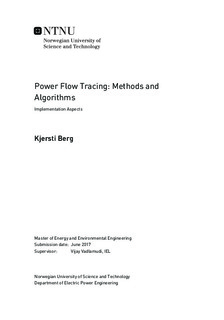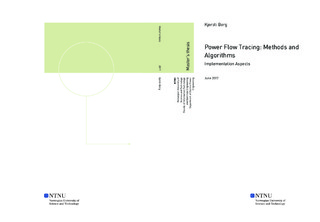| dc.description.abstract | With the advent of deregulation, power systems across the world have undergone major restructuring. The unbundling of generation, transmission and distribution services has led to the emergence of electricity markets. One of the crucial issues encountered in such a scenario concerns the appropriate allocation of transmission costs based on actual usage. Power Flow Tracing (PFT), a method which makes it possible to attribute the power flowing on transmission lines to specific generators and loads, was originally conceived as a means of realising equitable transmission service pricing. Over the last decade and a half, significant attention has been devoted in the power system research community on improving PFT models, techniques and algorithms.
Though PFT finds practical application in the electricity markets elsewhere in the world, it has not yet found widespread use in the European electricity markets. However, of late, it has been identified that the application potential of PFT can be extended to diverse areas of modern power system design and operation, especially in systems with high penetration of renewable energy sources. Taking cue from this, this thesis sets out to build the foundation for an eventual comprehensive framework for applying PFT to practical European power system models, for research at the Department of Electric Power Engineering, NTNU.
The main objective of this Master's thesis is to look into select-few prominent mathematical methods and algorithms in vogue for PFT from the point of view of their comparative efficiency. In-house programming codes in MATLAB for select-few methods the linear equation-based, the graph-based, and the node test-based methods, have been built, and their implementation aspects studied. Results from the implementation of PFT are presented on the 6 bus Roy Billinton Test System (RBTS) and the 24 bus IEEE Reliability Test System (RTS); additional illustrative systems are considered to demonstrate PFT in meshed systems with circular flows.
Further, the following applications of PFT are illustrated: loss allocation (transmission pricing-related), load shedding (power system operation and reliability-related) and $\text{CO}_2$-emission apportioning (sustainability-related). The latter demonstrative application deals with flow-based market coupling in the Northern European network, and is a joint venture with a fellow Master's student at NTNU, Cecilia Bringedal. | |

